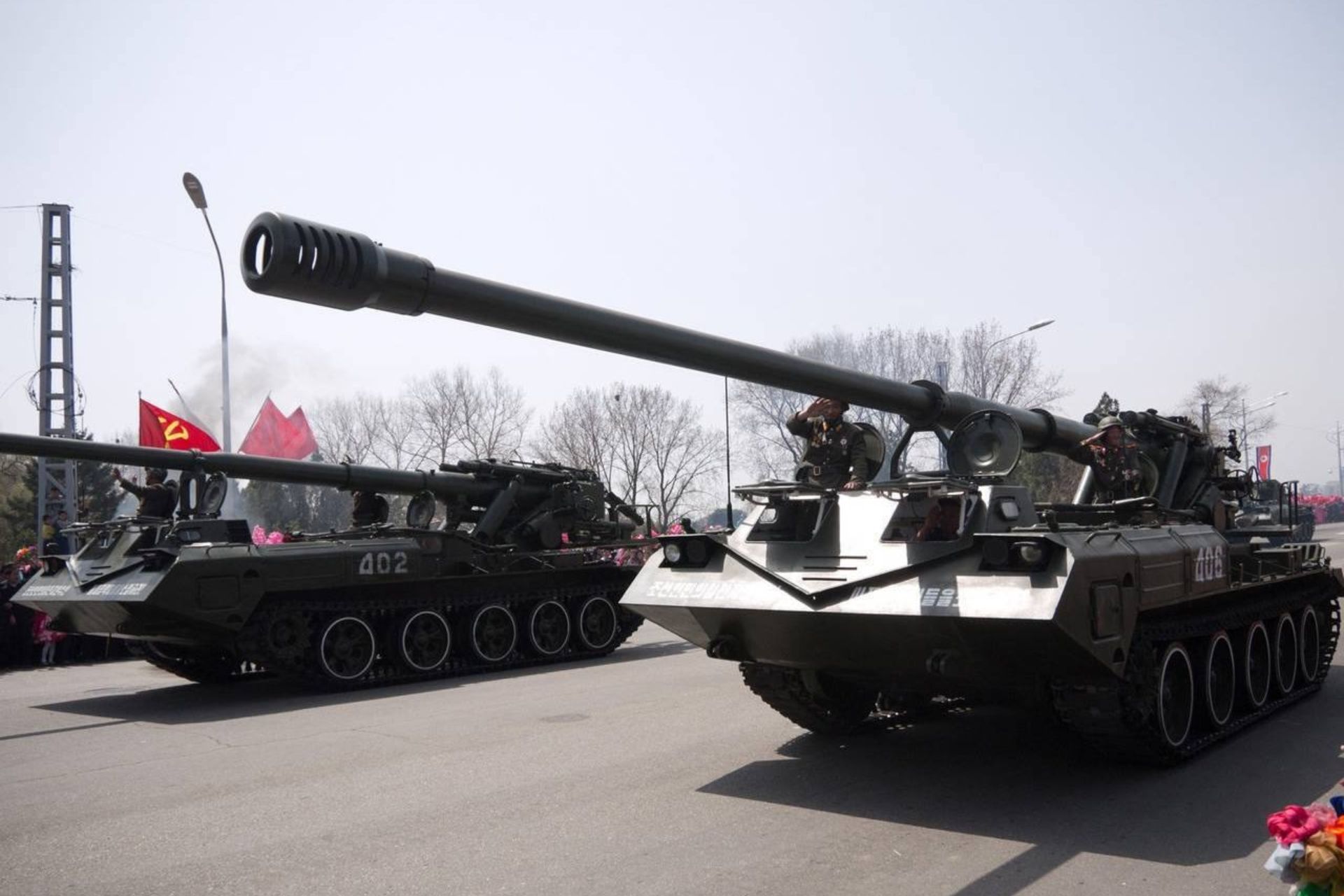Breaking News
North Korean M1989 Koksan Artillery Units Spotted in Transit Through Russia for Possible Deployment in Ukraine.
Photos shared on Russian and Ukrainian Telegram channels reportedly show North Korean M1989 Koksan 170mm self-propelled artillery units in transit across Russian territory, possibly en route to support frontline troops. According to @Archer83Able on X, the photo was reportedly taken in Krasnoyarsk, central Russia. These images, currently circulating on social media, illustrate an intensification of military cooperation between Moscow and Pyongyang, aimed at addressing Russia’s shortfall in long-range artillery following significant losses of 2S7 Pion howitzers on the Ukrainian front, as previously analyzed by Army Recognition.

The North Korean M1989 Koksan artillery units were seen in the city of Krasnoyarsk in central Russia (Picture source: X channel @bayraktar_1love)
The M1989 Koksan is a North Korean self-propelled artillery system developed in the late 1980s as an evolution of the earlier M1978 model. Mounted on a modified tracked chassis, possibly derived from the Chinese Type 59 tank, the M1989 features a 170 mm gun capable of delivering long-range fire support. This design includes an enclosed cabin for the crew and onboard storage for up to 12 rounds of ammunition, addressing the limitations of the M1978, which required a separate vehicle for ammunition transport.
The M1989's 170 mm gun can achieve a range of approximately 40 kilometers with standard high-explosive (HE) rounds and up to 60 kilometers when using rocket-assisted projectiles. This extended range enables the system to engage strategic targets from a considerable distance, making it a valuable asset for counter-battery operations. However, the M1989 has a relatively low rate of fire, estimated at one to two rounds every five minutes, due to the manual loading process and the size of the ammunition.
In terms of design, the M1989 incorporates a fully enclosed crew compartment, providing enhanced protection compared to the open-mounted configuration of its predecessor. The vehicle is equipped with two large spades at the rear, which are deployed to stabilize the platform during firing, reducing recoil and improving accuracy. Despite these improvements, the M1989's large size and weight may limit its mobility, particularly in rough terrain.
Operationally, the M1989 Koksan has been primarily deployed by the Korean People's Army, with reports indicating its presence near the Korean Demilitarized Zone (DMZ), where its long-range capabilities pose a significant threat to targets in South Korea. Additionally, North Korea has exported the M1989 to countries such as Iran, where it was used during the Iran-Iraq War in the 1980s. The system's ability to deliver long-range artillery fire makes it a notable component of North Korea's artillery forces.
The Koksan holds strategic value in North Korea’s arsenal, largely due to its 170mm caliber, which remains rare in modern artillery. With a barrel length exceeding eight meters, the Koksan’s range is comparable to NATO artillery currently used by Ukrainian forces, offering Russia a potential advantage to counter Ukraine’s range superiority, which has been reinforced by Western arms supplies. The Koksan previously demonstrated its capabilities in past conflicts, such as the Iran-Iraq War (1980–1988), where it was deployed in counter-battery missions to neutralize enemy artillery.

North Korean M1989 Koksan artillery system on parade in North Korea (Picture source: KCNA)
The deployment of M1989 Koksan units in Russia may be linked to significant losses in Russia’s long-range artillery, particularly the 2S7 Pion units, with nearly thirty reportedly destroyed or heavily damaged. The Military Balance 2024 estimates that Russia has around 50 modernized 2S7M Malka units and 75 2S7 Pions, but the loss of a substantial number of these, along with a shortage of 203mm ammunition, has severely impacted Russia’s long-range, high-impact strike capacity. Although the Koksan has a smaller caliber than the Pion, its comparable range makes it a viable substitute. However, its integration into the Russian arsenal presents logistical challenges, as the 170mm caliber is uncommon in Russia’s supply chain, necessitating either direct ammunition support from North Korea or dedicated resupply lines.
In addition to logistical issues, the use of North Korean artillery introduces tactical concerns. Ukrainian forces, equipped with NATO-provided counter-battery radars, drones, and precision-guided munitions, have effectively targeted Russian artillery, including 2S7 Pion units. Should Koksans be deployed in Ukraine, they could face similar counter-battery and precision strike threats, requiring Russia to adopt protective positioning strategies to minimize potential losses.
While North Korea’s provision of arms to Russia has been previously documented, the inclusion of long-range artillery systems like the Koksan marks a notable shift with operational implications. For Russia, these assets offer a temporary reinforcement of its long-range artillery capabilities. For Pyongyang, this collaboration with Moscow presents a rare opportunity to strengthen ties with a major power and potentially secure economic or technological assistance. However, this transfer likely violates United Nations sanctions on North Korean arms exports, potentially inviting increased international scrutiny and sanctions against the logistical networks facilitating this cooperation.


























